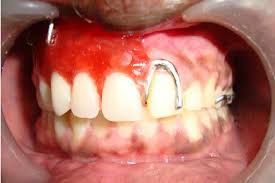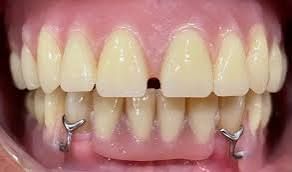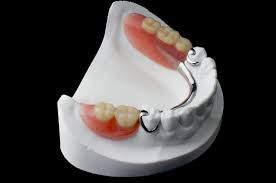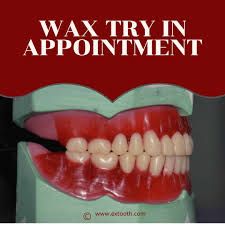Try-in is a very crucial step in a denture fabrication generally as it allows a dentist or a prosthodontist specifically to analyse and adjust every incoherent aspect of the denture as against normal criteria for denture fabrication such as esthetics, function, adaptation of denture base to the oral cavity, shade selection of teeth, setting direction retainers and bracing element, indirect retainers for long span tooth, phonetics, normal teeth arrangement, occlusion and so on.
This is like a form of assessment that would allow a proper functioning and esthetic concept of a partial denture to be alignment and thereby making it last longer with great efficiency.
Try-in may sometimes be at the fourth visit according to clinical requirements or based on the proposed sequence of treatment plan.
It is the last stage at which modifications can be made and good adjustment is brought in before the wax components of the denture is replaced by acrylic material or a metallic denture base as the case may be.
A careful analysis must be followed to prevent any errors or mistakes continuing through to the finished dentures or last segment of the fabrication.
The replacement of anterior teeth especially the incisors often represents an important event in the life of an edentulous patient and is usually associated with esthetic aspects.
Although in most cases, many patients are usually concerned with improved function as the major reason for seeking treatment, a sense of good esthetic appearance always remains an important factor as a patient may be dispassionate with a well constructed prosthesis
that lacks esthetic expression even if it meets all functional, mechanical and biologic requirements.
In a nutshell, if anterior teeth are to be replaced, an esthetic consideration during try-in step is very essential.
Furthermore, an important part of try-in step is that it allows a patient to view good assessment of the prosthesis and provide a feedback to the clinician.
On the other hand, a good try-in appointment should also permit the clinician to evaluate the esthetic and phonetic features of the constructed prosthesis and to make required alterations in the tooth arrangement so to give appropriate phonetic and esthetic expression.
Try-in appointment should also give room for the verification of previously made jaw relation concept done in the previous appointment.
For the sake of skepticism avoidance and unnecessary doubts with regards to the accuracy of the articulator mounting, a try-in appointment should be engaged in order to cross check the previous articulator in the laboratory
That's all as regards the write-up, more would be uncovered in the subsequent posts as to how to examine a try-in procedure on the cast and on the mouth of the patient. Thanks for the usual follow up and unconditional offer of support.
Happy Blogging and Reading 💥🦷🌴🦷
Video from دكتورة بان سعد YouTuber




Telegram and Whatsapp